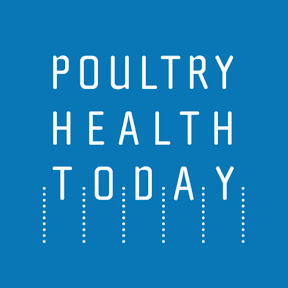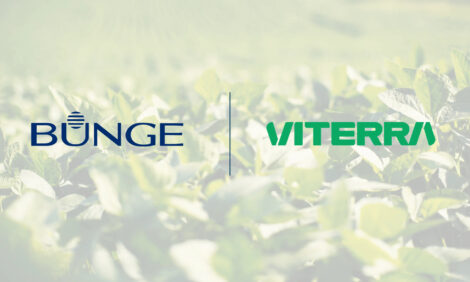



In ovo administration of recombinant HVT vector vaccines ‘perfect combination’ of microbiology and engineering
An interview with Alberto Giner, DVM, poultry technical manager, ZoetisQ: Herpesvirus of turkey (HVT) recombinant vector vaccines have become a valuable tool for poultry producers. Can you briefly explain what they are?
AG: HVT is the backbone of the vaccines. It’s an avirulent virus that replicates in chickens and stimulates immunity against Marek’s disease (MD). Genes from other viruses are inserted into the HVT backbone to provide immunity against additional diseases.
Q: Can you give examples of HVT vector vaccines?
AG: Some are single-vector. They protect against MD and an additional disease such as infectious bursal disease (IBD).
More recently, recombinant HVT dual-vector vaccines have been developed. They protect against MD plus two more diseases. One example would be an HVT vaccine that protects against IBD plus Newcastle disease (ND). Alternatively, an HVT vaccine might protect against ND plus infectious laryngotracheitis. These vaccines are also called dual-vectors since they protect against two diseases in addition to MD.
Q: What are the main advantages of HVT vector vaccines?
AG: The HVT recombinant vector vaccines are widely considered to be safe and do not cause the reactions that can sometimes occur with conventional vaccines. Vector vaccines simplify vaccine preparation since one of these vaccines will protect against two or three diseases. Simpler means fewer mistakes. In addition, with dual-vector HVT vaccines, producers will no longer have to face the dilemma of choice.
Q: Explain what you mean by the dilemma of choice?
AG: Two HVT vaccines cannot be used together; one will out-replicate and dominate over the other. The less dominant one will be less effective. You cannot, for instance, use an HVT-IBD vaccine with an HVT-ND vaccine. You have to pick one. This will be necessary less often with dual-vector vaccines.
Q: What’s the onset of immunity with vectored vaccines?
AG: I’ll use Poulvac® Procerta HVT-IBD as the example. Administered subcutaneously or in ovo, the vaccine demonstrated 90% or 92.5% efficacy, respectively, at 12 days of age against a very virulent IBD challenge.1 IBD maternal antibodies start to wane around 14 days of age, so the vaccine closes a gap in immunity.
Early IBD protection is essential because the disease tends to affect younger birds; it leads to immunosuppression, predisposing birds to secondary bacterial infection.
Q: How about the duration of immunity?
AG: Immunity from HVT vector vaccines in general is long-lasting. With Poulvac Procerta HVT-IBD, it’s at least 63 days.2 This can be especially valuable in layers and breeders, given their long life span.
Q: Will the HVT vector vaccines render conventional vaccines obsolete?
AG: Not at all. Firstly, not all diseases are currently covered by HVT vector vaccines. Secondly, there is the issue of mutual incompatibility among HVT vector vaccines. Thirdly, in higher challenge areas, either a modified-live and/or an inactivated vaccine will be desirable to address the challenge. Therefore, we still need modified-live and inactivated vaccines.
Q: Are there benefits of administering vector vaccines in ovo versus subcutaneously?
AG: In ovo administration reduces the need for day-old individual handling and injection, thereby reducing stress on birds. Most vector vaccines can be administered subcutaneously, but when administered with the proven technology of the Embrex® Inovoject® system, they provide tremendous convenience. It’s the perfect combination of microbiology and engineering. There are also tremendous labor savings.
Q: Elaborate on labor savings with in ovo vaccination.
AG: Consider that, on average, one person working 8 hours a day may vaccinate 2,500 chicks an hour. It would take more than 81 hours and 10 workers to vaccinate 204,100 chicks. With in ovo vaccination and a crew of three to five people, about 35,000 eggs per hour can be vaccinated. That translates into 250,000 eggs vaccinated with 7.14 machine hours. Because it’s so much faster, in ovo vaccination markedly reduces the time it takes to get chicks to the farm.
Q: Does in ovo administration improve bird performance?
AG: Studies with the Embrex Inovoject system show there is less mortality, better bodyweight and better feed conversion compared to subcutaneous vaccination.3,4 The system identifies infertile or dead eggs and removes them from the hatch basket, so hatchability is better.
A major advantage is Inovoject’s dual-needle system. It can provide better protection compared to a simpler system,5 and contamination is less likely because the needle that delivers the vaccine never touches the shell — it’s inside the puncture needle. And, of course, better protection means better performance.
Q: How would you sum up use of HVT vector vaccines and in ovo administration?
AG: HVT vector vaccines provide more options than ever before for effectively managing several serious diseases of poultry. Used with a reliable system like Embrex Inovoject — which comes with a very high level of technical support — vaccination is simpler, more convenient and producers will have reduced labor requirements.













